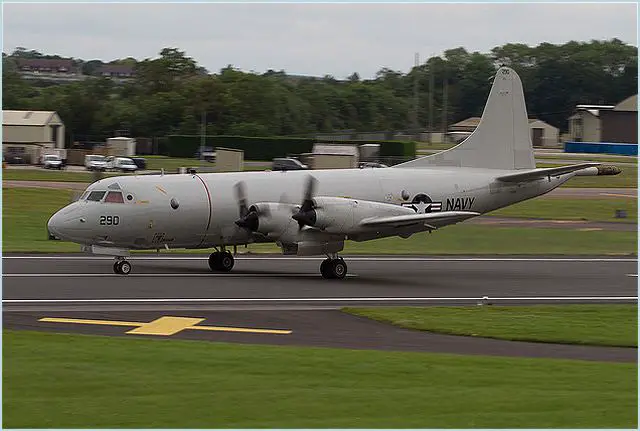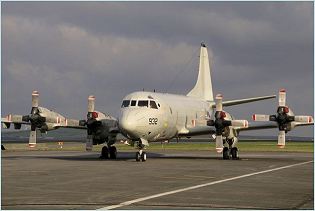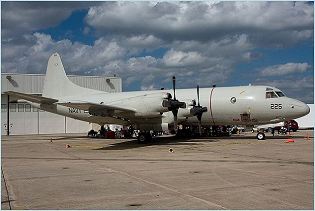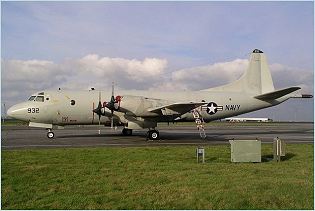P-3C Orion
| a | ||||||||||||||||||||||
|
P-3 P-3C ORION Maritime patrol aircraft
|
||||||||||||||||||||||
 |
||||||||||||||||||||||
|
|
||||||||||||||||||||||
|
The P-3 Orion is a four-engine turboprop anti-submarine and maritime surveillance aircraft developed for the United States Navy and introduced in the 1960s. The P-3 Orion is a peerless airborne hunter. Its reputation as the ultimate submarine finder was earned through nearly 50 years of service, from the Cuban Missile Crisis to round-the-clock patrols throughout the Cold War. Uniquely suited as the world’s premier multi-mission maritime long-endurance aircraft, the P-3 performs air, surface and subsurface patrol and reconnaissance tasks over extended periods and far from support facilities. Recently, the P-3 provided support for Operation Unified Assistance in Southeast Asia, Hurricane Katrina, Operation Atalanta in the Gulf of Aden, and the BP Horizon oil rig disaster in the U.S. No other aircraft is better suited for these missions, and Lockheed Martin’s P-3 Mid-Life Upgrade Program will help ensure the P-3 is mission ready for decades to come. The P-3 Orion has been the U.S. Navy's frontline, land-based maritime patrol aircraft since the 1960s. The most capable Orion version is the P-3C, first delivered to the Navy in 1969. The Navy implemented a number of major improvements to the P-3C (Updates I, II, II.5 and III) during its production run. P-3C aircraft communication, navigation, acoustic, non-acoustic and ordnance/weapon systems are still being modernized within several improvement programs to satisfy Navy and joint requirements through the early part of the 21st century. With 435 aircraft worldwide operated by 21 governments and agencies in 17 countries, the P-3 remains a relied-upon asset today. Time and time again, the P-3 proves that it is remarkably well adapted for maritime patrol and support. |
||||||||||||||||||||||
|
Main Variants:
- WP-3D: Two P-3C aircraft as modified on the production line for NOAA weather research, including hurricane hunting. - EP-3E Aries: 10 P-3A and 2 EP-3B aircraft converted into ELINT aircraft. - EP-3E Aries II: 12 P-3C aircraft converted into ELINT aircraft. - AP-3C: All Royal Australian Air Force P-3C/W aircraft which have been fully upgraded with totally new mission systems by L-3 Communications to include an Elta SAR/ISAR RADAR and a GD-Canada Acoustic Processor system. - CP-140 Aurora: Long-range maritime reconnaissance, anti-submarine warfare aircraft for the Canadian Forces. Based on the P-3C Orion airframe, but mounts the more advanced electronics suite of the Lockheed S-3 Viking; 18 built - CP-140A Arcturus: Three P-3s without ASW equipment for Canadian Aurora crew training and various coastal patrol missions. |
||||||||||||||||||||||
| Technical Data | ||||||||||||||||||||||
| Design | ||||||||||||||||||||||
|
The flight deck accommodates the pilot, the co-pilot and the flight engineer. The main cabin is configured as a mission operations room for the tactical coordinator, the navigator and communications operator, two operators for the acoustic sensor suite, the electromagnetic sensors systems operator (responsible for the operation of the radar, electronic support measures, infrared detection system and magnetic anomaly detectors), the ordnance crew member and the flight technician. Circular protruding windows in the main cabin give the crew a 180° view. The P-3 Orion has an internal bomb bay under the front fuselage which can house conventional Mark 50 torpedoes or Mark 46 torpedoes and/or special (nuclear) weapons.
|
||||||||||||||||||||||
| Avionics | ||||||||||||||||||||||
|
The P-3C has advanced submarine detection sensors such as directional frequency and ranging (DIFAR) sonobuoys and magnetic anomaly detection (MAD) equipment. The avionics system is integrated by a general purpose digital computer that supports all of the tactical displays, monitors and automatically launches ordnance and provides flight information to the pilots. In addition, the system coordinates navigation information and accepts sensor data inputs for tactical display and storage. The integrated State-of-the-Art Maritime Airborne Mission System of the P-3 Orion enables networked-node participation and provides timely information to tactical users and command centers. The P-3 Orion is also equipped with Advanced Synthetic Aperture Radar with multimode-operation capability which provides periscope and small target detection, navigation, weather avoidance and long-range surface search. The Sophisticated Electro-Optical Infrared Sensor offers 360-degree day-and-night detection and identification capability at tactically significant ranges. Advanced Acoustic and Nonacoustic Sensors are integrated into a seamless mission avionics system that enables maximum crew efficiency and workload sharing.
|
||||||||||||||||||||||
| Propulsion | ||||||||||||||||||||||
|
The P-3C Orion is powered by four Allison T56-A-14 turboprop engines rated at 3,661kW. Each engine drives a four-blade constant-speed propeller, type 54H60-77 supplied by Hamilton Standard. There are five fuel tanks, one in the fuselage and four integral wing tanks with a total fuel capacity of 34,800l.
|
||||||||||||||||||||||
| Armament | ||||||||||||||||||||||
|
The P-3 has an internal bomb bay under the front fuselage which can house conventional Mark 50 torpedoes or Mark 46 torpedoes and/or special (nuclear) weapons. Additional underwing stations, or pylons, can carry other armament configurations including the AGM-84 Harpoon, AGM-84E SLAM, AGM-84H/K SLAM-ER, the AGM-65 Maverick, 127 millimetres (5.0 in) Zuni rockets, and various other sea mines, missiles, and gravity bombs. The aircraft also had the capability to carry the AGM-12 Bullpup guided missile until that weapon was withdrawn from U.S./NATO/Allied service.
- Missiles: Air-to-surface missile: AGM-65 Maverick, AGM-84 Harpoon, AGM-84 Standoff Land Attack Missile (SLAM-ER)[1] - Bombs: Depth charges, MK20 Rockeye, MK80 Series (MK82, MK83, MK84) general purpose bombs, B57 nuclear bomb (US service only, retired 1993) - Other: Mk 44 (mostly retired from service), Mk 46,[1] Mk 50, Mk 54 or MU90 Impact torpedoes Mk 25, Mk 39, Mk 55, Mk 56, Mk 60 CAPTOR or Mk 65 Quickstrike naval mines; Stonefish naval mine (in Australian service); Active and passive Sonobuoys |
||||||||||||||||||||||
| Specifications | ||||||||||||||||||||||
|
||||||||||||||||||||||
 |
||||||||||||||||||||||
|
||||||||||||||||||||||































